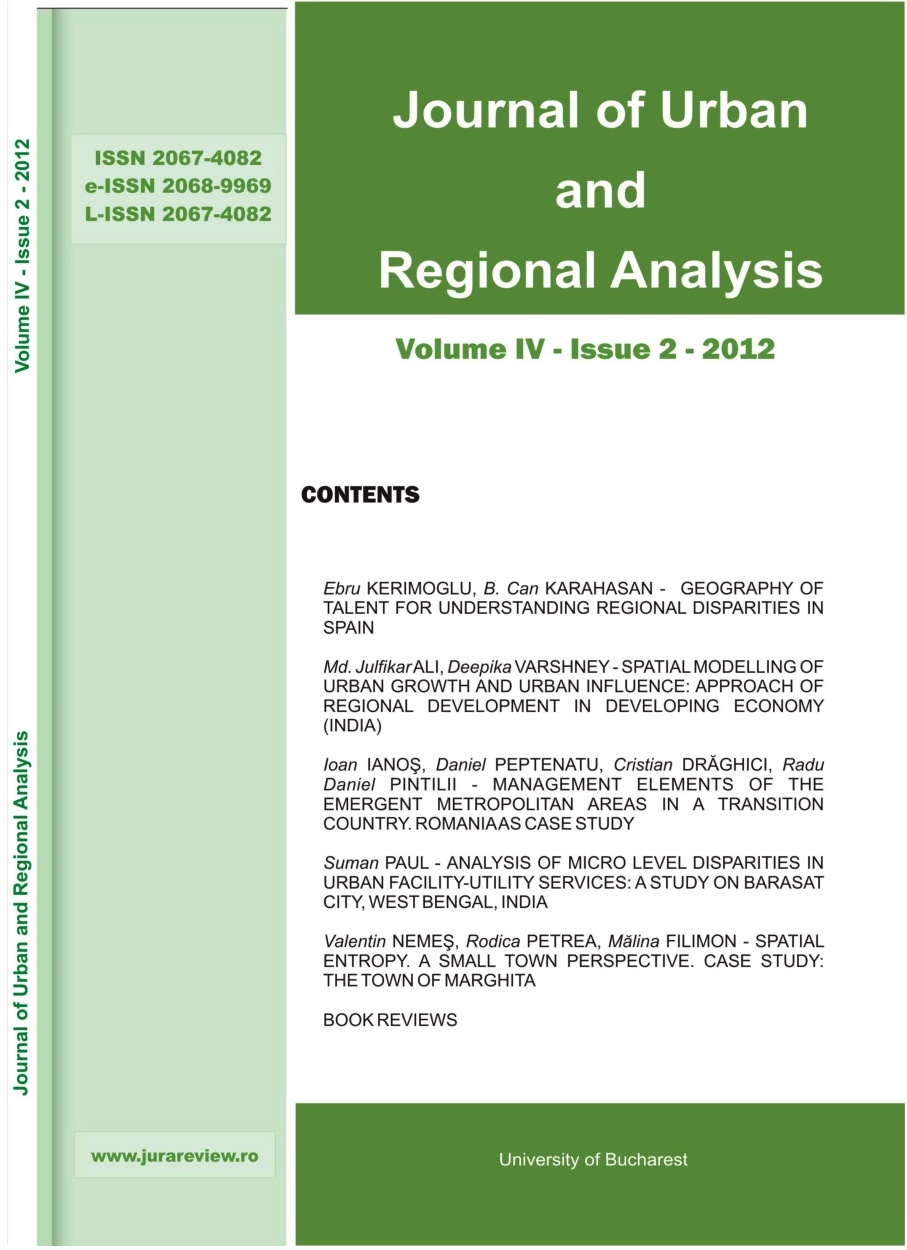SPATIAL ENTROPY. A SMALL TOWN PERSPECTIVE. CASE STUDY: THE TOWN OF MARGHITA
SPATIAL ENTROPY. A SMALL TOWN PERSPECTIVE. CASE STUDY: THE TOWN OF MARGHITA
Author(s): Valentin Nemeş, Rodica Petrea, Mălina FilimonSubject(s): Geography, Regional studies, Social development, Demography and human biology, Rural and urban sociology, Economic development, Environmental interactions, Socio-Economic Research
Published by: Editura Universitară
Keywords: spatial entropy; urban system; sustainable development; small town Marghita;
Summary/Abstract: The concept of "spatial entropy" developed by Michael Batty (1974) was primarily used to test different hypotheses concerning the distribution and density of population in great cities like New York, London, Los Angeles. Subsequently spatial entropy was adapted in urban and regional studies, where two types of research have been outlined: - "descriptive statistics" and "MaxEnt" method (Esmer 2005). Three characteristic elements related to the three components of sustainable development (society, economy and environment) have been considered to shape the degree of entropy for the urban system Marghita, namely: population, turnover and green spaces. The determination of the entropy degree for the Marghita urban system was achieved by applying statistical physics functions on open systems, related to the three pillars of sustainable development. The three domains are represented by a series of dynamic and complex elements characterized by input and output streams, influenced by endogenous factors characteristics of urban system and exogenous factors from the higher integrator urban system.
Journal: Journal of Urban and Regional Analysis
- Issue Year: 4/2012
- Issue No: 2
- Page Range: 189-198
- Page Count: 10
- Language: English

